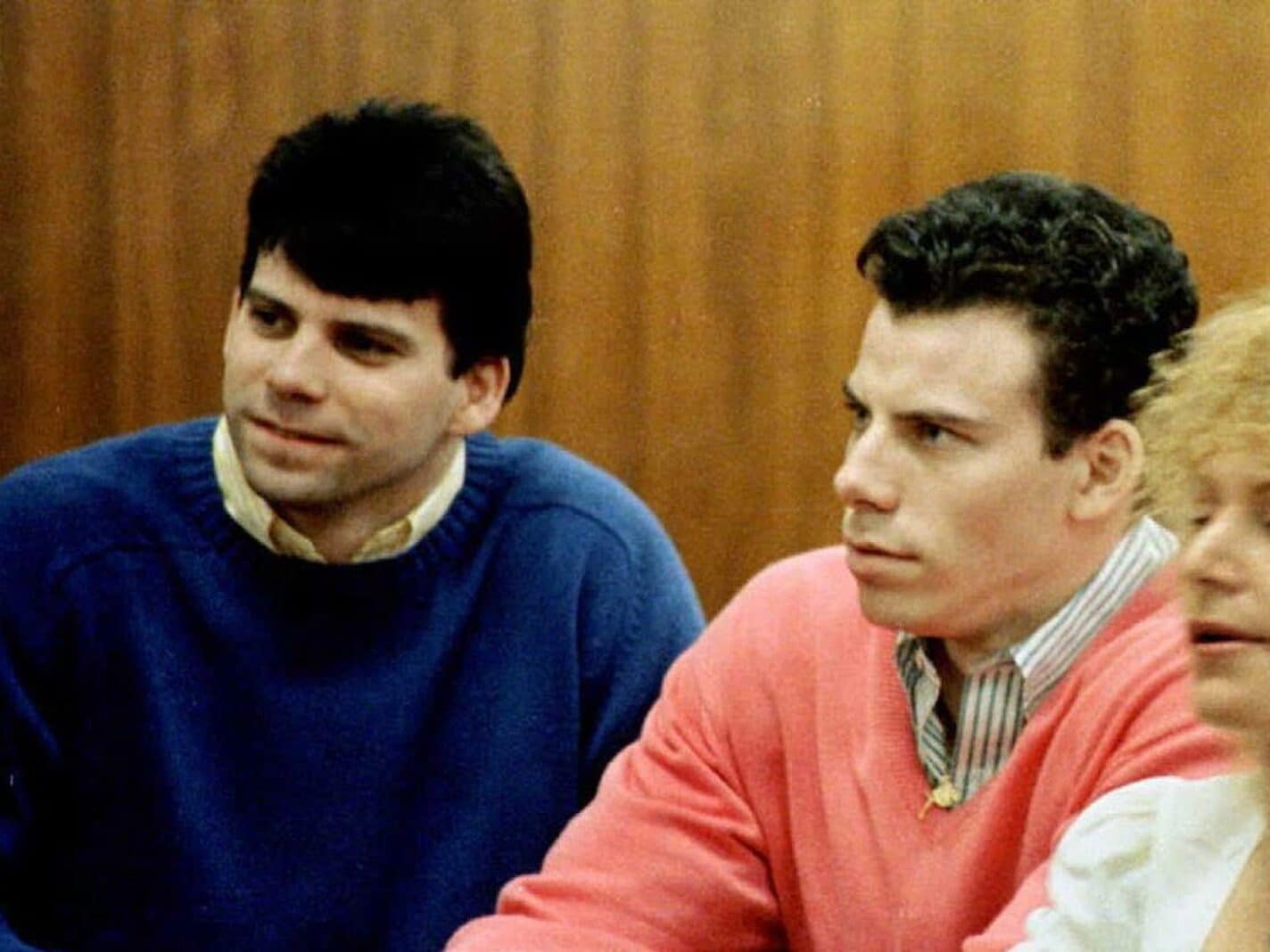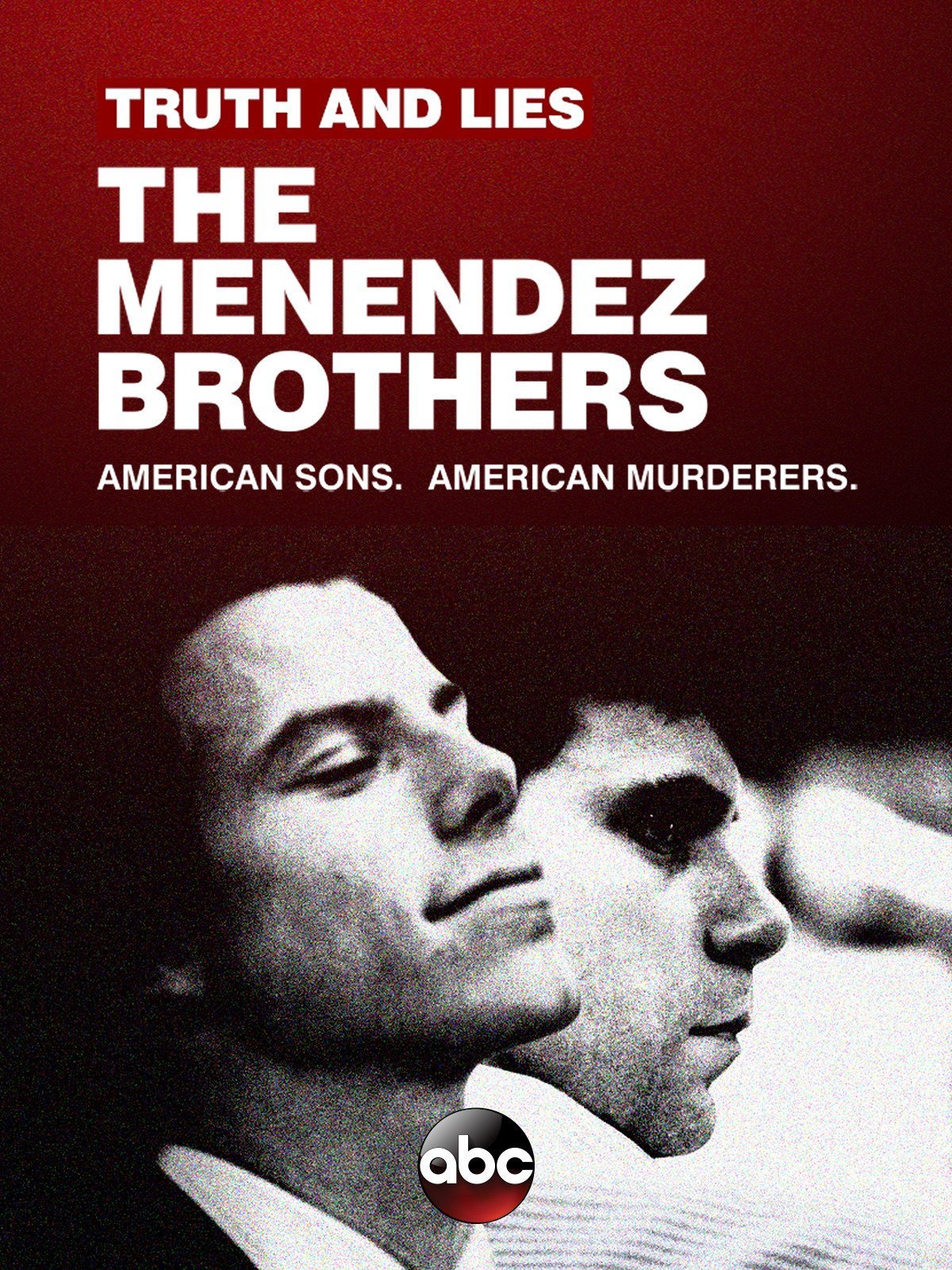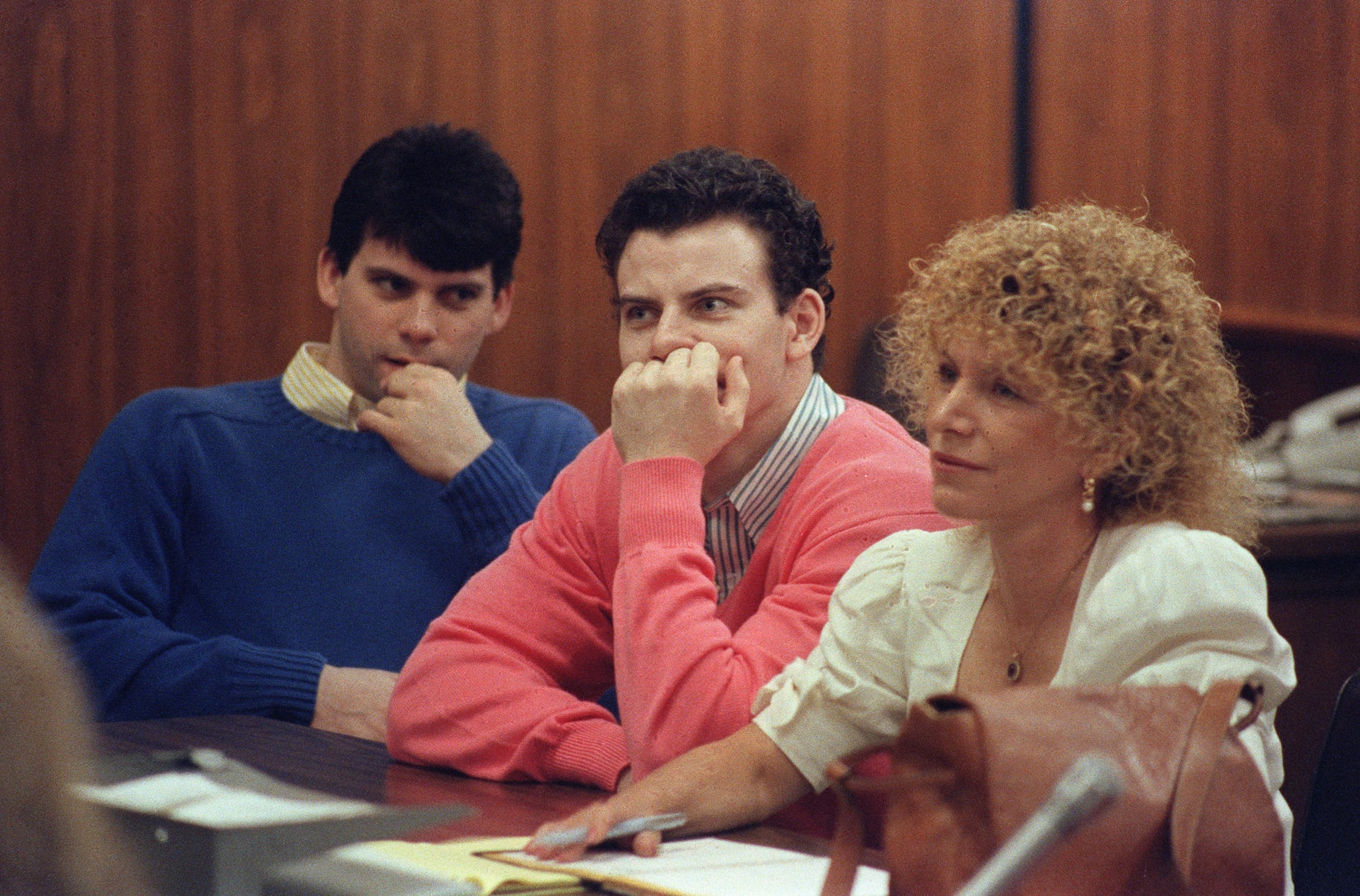Dive Deep: The Menendez Brothers Documentary - Shocking Truths Uncovered!
Can a story of unimaginable violence also be a story of profound victimization? The Menendez Brothers documentary isn't just a retelling of a gruesome crime; it's a deep dive into the complexities of family, abuse, and the enduring power of narrative, promising to challenge your perceptions of guilt and innocence.
The Menendez Brothers case, with its layers of intrigue and tragedy, has proven to be a veritable goldmine for true crime enthusiasts. The documentary format, particularly, allows for a comprehensive exploration of the events, motivations, and societal impact far beyond the initial sensational headlines. It navigates the nuances of the case, offering a platform for diverse voices legal experts, psychologists, and even the brothers themselves to shed light on the darkness that consumed the Menendez family. This approach fosters a deeper understanding, moving beyond surface-level judgments to grapple with the ethical and moral ambiguities inherent in the story. The documentary becomes not merely a chronicle of crime but a mirror reflecting our own societal biases and preconceived notions about justice.
| Menendez Brothers Case Summary | |
|---|---|
| Date of Murders | August 20, 1989 |
| Location | Beverly Hills, California |
| Victims | Jose Menendez, Kitty Menendez |
| Perpetrators | Erik Menendez, Lyle Menendez |
| Sentencing | Life imprisonment without parole |
| Legal Claim | Self-defense due to years of abuse |
| Documentary Focus | Examination of abuse allegations, family dynamics, media influence, and societal impact |
| Reference | Justia Law - Menendez Case Details |
The Menendez Brothers case hinges on the brutal slayings of Jose and Kitty Menendez on August 20, 1989, within the confines of their opulent Beverly Hills home. The initial response painted a picture of two sons, Erik and Lyle, reeling from the sudden and violent loss of their parents. Yet, as the investigation progressed, whispers of suspicion began to circulate, ultimately unraveling a web of family secrets that would captivate the nation. The trial itself became a spectacle, a televised drama filled with accusations, denials, and shocking revelations. It transformed the Menendez name from a symbol of wealth and privilege into a byword for dysfunction and unimaginable violence. The details of the murders, the lavish spending that followed, and the brothers' shifting accounts fueled a media frenzy that amplified the already sensational nature of the case.
- Alix Earles Jawdropping Leaked Content See It Now
- Miracle Conjoined Twin Gives Birth At Separation Hospital
The sheer brutality of the murders cannot be overstated. Jose and Kitty Menendez were found riddled with bullets, the scene bearing the hallmarks of a calculated and merciless attack. The brothers initially maintained their innocence, offering explanations that seemed to crumble under scrutiny. Their subsequent claim of self-defense, rooted in allegations of years of physical, emotional, and sexual abuse at the hands of their father, became the cornerstone of their defense. This claim, however, was met with skepticism, given the privileged background of the family and the seemingly contradictory behavior of the brothers in the aftermath of the killings. The prosecution argued that the murders were motivated by greed, fueled by the brothers' desire to inherit the family fortune and escape the constraints imposed by their parents. The conflicting narratives abuse versus avarice became the central battleground in the courtroom, dividing public opinion and raising complex questions about the nature of justice.
The initial investigation into the Menendez murders was fraught with challenges. While the brothers initially presented themselves as grief-stricken and cooperative, their actions and statements soon raised red flags. Their extravagant spending in the months following the murders, coupled with inconsistencies in their accounts of the events leading up to the killings, aroused the suspicion of law enforcement. It wasn't long before the investigators began to focus their attention on Erik and Lyle, meticulously gathering evidence to build a case against them. The discovery of Erik's confession to his psychologist, Dr. L. Jerome Oziel, provided a crucial breakthrough, despite the legal battles surrounding its admissibility in court. This confession, combined with other circumstantial evidence, ultimately led to the brothers' arrest in 1990, setting the stage for a trial that would become a national obsession.
The Menendez Brothers documentary distinguishes itself by offering a multifaceted exploration of the case, going beyond a simple recitation of facts. It meticulously compiles interviews with key figures legal analysts, forensic psychologists, investigators, and those close to the family to construct a comprehensive narrative. Archival footage from the trial, news reports, and home videos further enrich the viewer's understanding, providing a visual and emotional context to the events. The documentary strives for balance, presenting both the brothers' claims of abuse and the prosecution's counter-arguments. It allows the viewer to grapple with the conflicting evidence and form their own conclusions, rather than imposing a predetermined narrative. This nuanced approach elevates the documentary beyond mere entertainment, transforming it into a thought-provoking examination of justice, trauma, and the complexities of the human psyche.
The structure of the documentary adheres to a chronological timeline, beginning with the murders and tracing the subsequent investigation, trials, and appeals. This approach allows viewers to progressively unravel the complexities of the case, witnessing the evolution of public perception and the legal maneuvering that shaped the outcome. The documentary meticulously reconstructs the events of August 20, 1989, presenting the evidence and the conflicting accounts of what transpired within the walls of the Menendez home. It then delves into the initial investigation, highlighting the missteps, the crucial discoveries, and the growing suspicion surrounding Erik and Lyle. The documentary also dedicates significant time to the trials themselves, showcasing the legal arguments, the witness testimonies, and the emotional impact of the proceedings on all involved. By adhering to a chronological framework, the documentary provides a clear and accessible pathway through the intricate details of the case.
The documentary's strength lies in its diverse cast of contributors, each offering a unique perspective on the Menendez case. Legal experts dissect the legal strategies employed by both the prosecution and the defense, providing insights into the complexities of the courtroom battles. Psychologists analyze the psychological evaluations of the brothers, exploring the potential impact of childhood trauma on their behavior and decision-making. Family members and friends offer intimate glimpses into the lives of the Menendez family, revealing the dynamics that may have contributed to the tragic events. The inclusion of these varied voices creates a rich and layered narrative, allowing viewers to consider the case from multiple angles. This diversity is essential for understanding the multifaceted nature of the case, moving beyond simplistic explanations to grapple with the complex interplay of factors that led to the murders.
One of the central themes explored in the Menendez Brothers documentary is the pervasive presence of abuse and trauma. The documentary meticulously examines the allegations of physical, emotional, and sexual abuse leveled against Jose Menendez by his sons. It presents the brothers' accounts of their childhood experiences, exploring the potential impact of these alleged abuses on their psychological development and their ultimate decision to commit patricide. This exploration raises profound questions about the nature of trauma, its long-term consequences, and its potential to distort an individual's perception of reality. The documentary does not shy away from the uncomfortable details of the alleged abuse, but it also acknowledges the challenges of verifying these claims and the potential for manipulation. By presenting both sides of the story, the documentary invites viewers to critically examine the evidence and consider the complex relationship between trauma and violence.
The role of the media in shaping public perception is another crucial theme explored in the Menendez Brothers documentary. The sensational coverage of the case, with its lurid details and dramatic courtroom battles, transformed the Menendez brothers into household names. The media's portrayal of the brothers as either cold-blooded killers or victims of abuse influenced jury opinions and contributed to the polarized public response. The documentary examines how the media capitalized on the emotional intensity of the case, often prioritizing sensationalism over objective reporting. It highlights the potential for media coverage to distort reality, shape public opinion, and influence the outcome of legal proceedings. By analyzing the media's role in the Menendez case, the documentary raises broader questions about the ethics of journalism and the responsibility of the media to provide accurate and unbiased information.
The documentary also delves into the psychological complexities surrounding the Menendez family, focusing on the dysfunctional dynamics that may have contributed to the tragic events. Experts provide insights into the psychological evaluations of Erik and Lyle, exploring the potential impact of their traumatic experiences on their mental and emotional states. These evaluations shed light on the brothers' motivations, their perceptions of reality, and their capacity for violence. The documentary examines the intricate relationships within the Menendez family, highlighting the potential for abuse, neglect, and emotional manipulation. It portrays Jose and Kitty Menendez as complex individuals with their own flaws and vulnerabilities, rather than simply as victims. By exploring the psychological aspects of the case, the documentary offers a more nuanced understanding of the factors that may have contributed to the murders, moving beyond simplistic explanations of greed or malice.
The public reaction to the Menendez Brothers case was nothing short of intense. The sensational nature of the crime, coupled with the privileged background of the family, captivated the nation and sparked a fierce debate about justice, abuse, and the influence of wealth and power. The trials were widely covered by the media, with television cameras broadcasting the courtroom proceedings into homes across the country. This unprecedented level of media exposure transformed the Menendez brothers into celebrities, sparking a cultural phenomenon that continues to resonate today. The public was divided, with some viewing the brothers as cold-blooded killers who deserved to be punished to the fullest extent of the law, while others saw them as victims of abuse who were driven to violence by their traumatic experiences. This polarized public opinion reflected the complex and controversial nature of the case.
The impact of social media on the Menendez Brothers case is a more recent phenomenon, but it is no less significant. In the age of online forums and social media platforms, discussions about the case continue to thrive, with differing opinions and interpretations emerging. Social media has provided a platform for armchair detectives to dissect the evidence, debate the legal arguments, and share their own theories about what really happened on August 20, 1989. This ongoing dialogue reflects the case's lasting impact on society and the enduring fascination with the Menendez brothers. Social media has also allowed for new voices to be heard, including those who have personal experiences with abuse and trauma. These voices have added a new dimension to the discussion, challenging the dominant narratives and advocating for a more nuanced understanding of the case.
The Menendez Brothers case has had a profound impact on both societal views of domestic abuse and the legal system. The case raised awareness about the complexities of self-defense claims, particularly in cases involving familial abuse. It challenged the traditional notions of self-defense, which typically involve immediate threats and proportionate responses. The Menendez brothers argued that their actions were justified by years of abuse and that they feared for their lives, even though the immediate threat was not apparent. This argument sparked a legal debate about the concept of "battered child syndrome" and the potential for past trauma to influence an individual's perception of danger. The case also led to changes in legal precedents, with some courts adopting a more lenient approach to self-defense claims in cases involving familial abuse.
Beyond its legal ramifications, the Menendez Brothers case has also served to educate viewers about the psychological ramifications of abuse. The documentary highlights the long-term consequences of childhood trauma, including anxiety, depression, and post-traumatic stress disorder. It underscores the importance of seeking help for victims of abuse and the need for greater societal awareness of the issue. The case has also sparked a broader conversation about the dynamics of abusive families and the potential for violence to erupt in such environments. This increased awareness is crucial in advocating for victims of abuse, preventing future instances of violence, and fostering a more compassionate and understanding society.
As of today, Erik and Lyle Menendez remain incarcerated, serving life sentences without the possibility of parole. Their case continues to evoke debate and discussion, with some arguing for their release based on their claims of abuse and their demonstrated rehabilitation. Others maintain that they are guilty of a heinous crime and deserve to spend the rest of their lives in prison. The case serves as a reminder of the complexities of justice and the challenges of balancing the rights of victims with the need for compassion and understanding. The Menendez brothers' ongoing story continues to captivate audiences and provoke discussion about the potential for redemption, even in the face of unspeakable violence. Their fate remains uncertain, but their case will undoubtedly continue to be debated and analyzed for years to come.
In recent years, both brothers have participated in interviews and documentaries, further sharing their perspectives on the events that transpired. These interviews have provided new insights into their motivations, their experiences with abuse, and their reflections on the crime they committed. The brothers have expressed remorse for their actions, while also maintaining that they were driven to violence by their traumatic childhood experiences. Their willingness to speak openly about the case has reignited the debate about their guilt and innocence, with some viewing their interviews as genuine expressions of remorse and others dismissing them as manipulative attempts to gain sympathy. The brothers' continued participation in the media landscape ensures that their story remains in the public consciousness, sparking ongoing discussions about justice, trauma, and the complexities of the human psyche.
Public perception of the Menendez Brothers has evolved significantly over time. Initially, they were widely condemned as cold-blooded killers who deserved to be punished to the fullest extent of the law. However, as more information about their alleged abuse came to light, some began to view them as victims of circumstance who were driven to violence by their traumatic childhood experiences. This shift in public opinion reflects the growing awareness of the complexities of domestic abuse and the potential for trauma to influence an individual's behavior. Today, public perception of the Menendez brothers remains divided, with some still viewing them as monsters and others seeing them as tragic figures who deserve compassion and understanding. This dichotomy reflects the enduring complexities of the case and the emotional responses it elicits.
The keyword term, "Menendez Brothers documentary," underscores the central focus of this analysis. The Menendez Brothers documentary, a noun phrase, serves as the nucleus for understanding the entire narrative. It is this documentary that acts as a lens, allowing us to examine the intricate details, psychological implications, and societal ramifications of the infamous Menendez case. By dissecting the themes presented in the documentary, we gain a profound insight into the complexities surrounding abuse, trauma, media influence, and the legal system. The documentary transforms from a mere recounting of a crime into a poignant exploration of the human condition. The documentary is more than just a source of information; it's a cultural artifact that reflects our societal fascination with true crime, our grappling with moral ambiguities, and our enduring quest for justice and understanding.



Detail Author:
- Name : Prof. Kayla Leuschke II
- Username : irwin.hartmann
- Email : randal27@hotmail.com
- Birthdate : 1992-06-03
- Address : 172 Madge Views Apt. 402 Port Asa, NY 12529-9325
- Phone : (463) 697-9521
- Company : Dietrich Inc
- Job : Precision Mold and Pattern Caster
- Bio : Itaque voluptate sed alias tempora similique ratione ut enim. Ullam voluptatibus inventore dolores eos corrupti rerum exercitationem. Ut et eos ea.
Socials
linkedin:
- url : https://linkedin.com/in/dixie_conroy
- username : dixie_conroy
- bio : Recusandae et in sit quis nam amet.
- followers : 6586
- following : 1562
twitter:
- url : https://twitter.com/conroy2019
- username : conroy2019
- bio : Debitis amet assumenda corrupti cumque. Perferendis voluptatem quidem et minus numquam. A saepe voluptatem dolore ab aut enim harum.
- followers : 3892
- following : 187
facebook:
- url : https://facebook.com/conroy2009
- username : conroy2009
- bio : Illum ea sunt ab dolorem tenetur. Reprehenderit repellendus enim fugit iure.
- followers : 483
- following : 2565
tiktok:
- url : https://tiktok.com/@dixie_conroy
- username : dixie_conroy
- bio : Rerum qui consequuntur quis dolor rerum occaecati.
- followers : 1508
- following : 2803